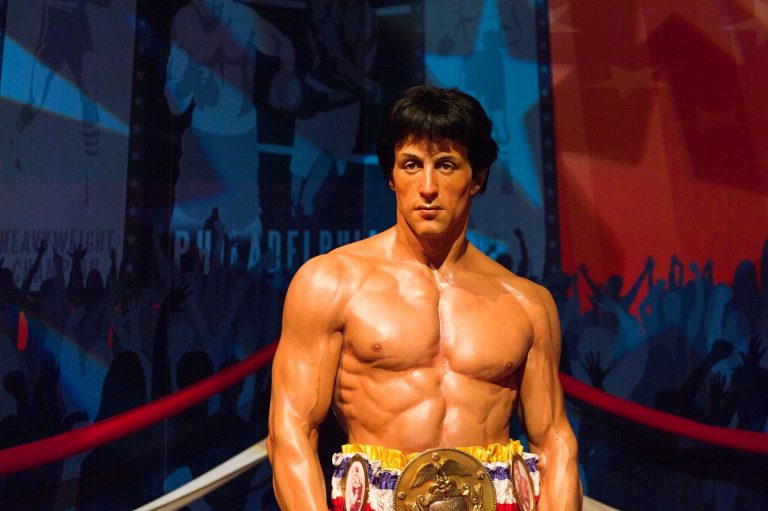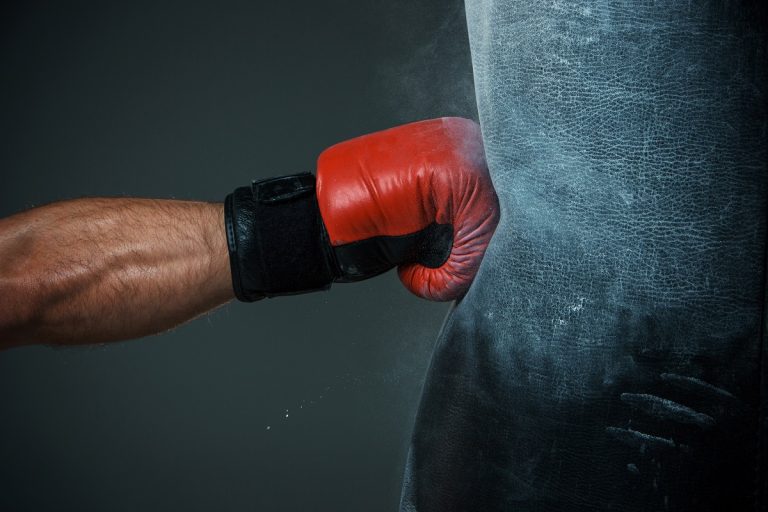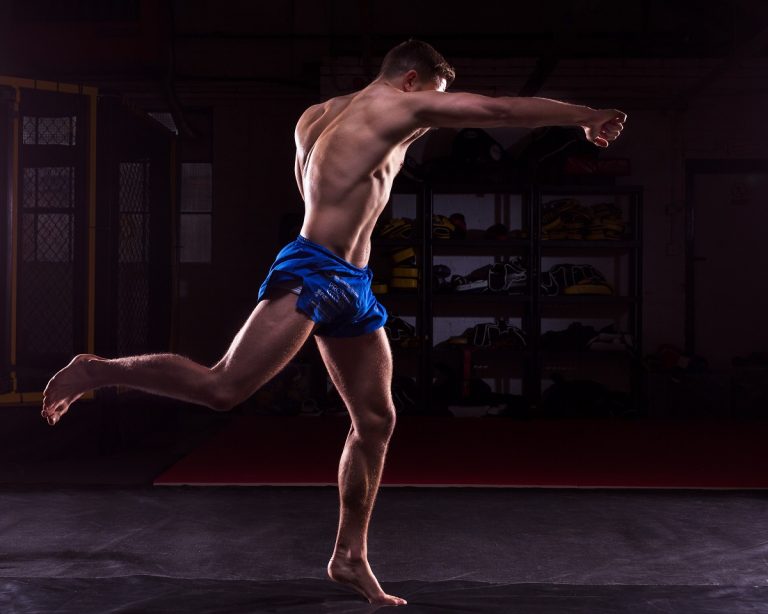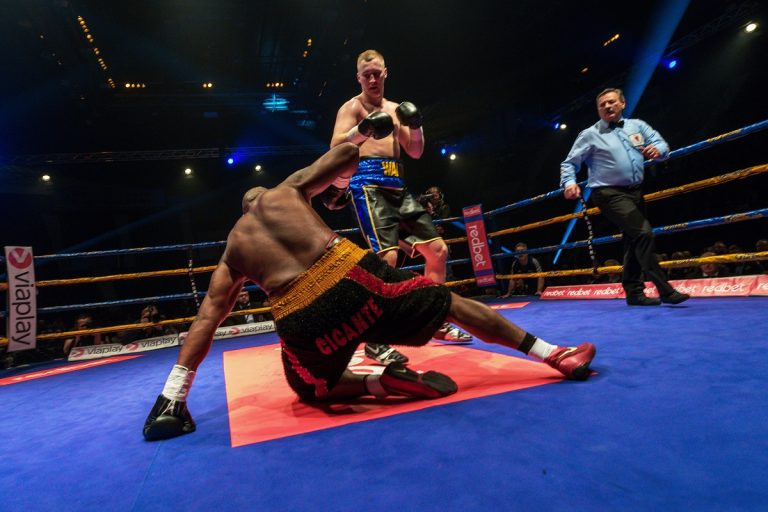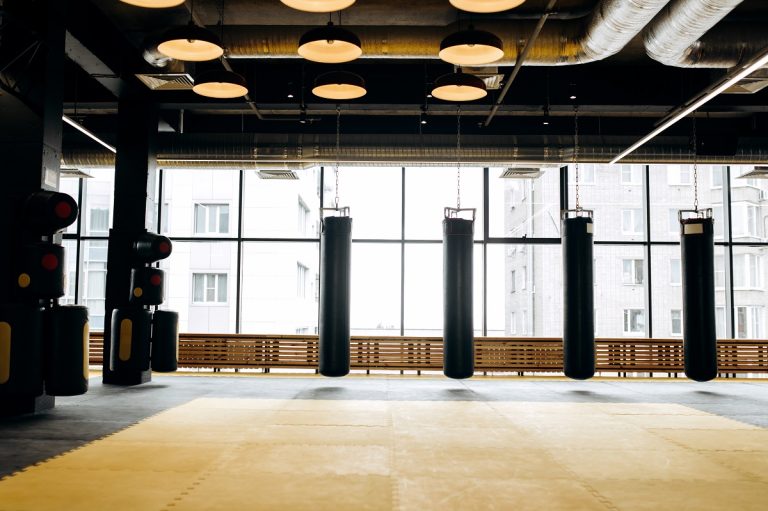Southpaw vs. Orthodox: Which Stance is More Effective?
In martial arts, the fighters are chiefly divided into two preferred stances—southpaw and orthodox—with both sides claiming theirs is better. The combat sports world has seen southpaw and orthodox fighters dominate several competitions and win major belts. This reality raises the question, “which stance is more effective?”
Accordingly, this guide will reveal the disparities and parallels between southpaw and orthodox stances and the point where each position comes off as practical or fails. After reading this piece, you’ll be able to decide what stance is best for you and understand the situation of someone with a different fighting posture.
An Overview of Southpaw and Orthodox Stances
Let’s quickly run through the two most common fighting stances and what they entail.
Southpaw Stance

The southpaw stance is a fighting posture in boxing and other combat sports introduced by William “Bendigo” Thompson in the 19th century. It involves the fighter standing with their right hand and right foot in front, starting with right jabs and advancing to a left cross right hook. Typically, this stance is employed by left-handed fighters.
Orthodox Stance

Generally, the orthodox stance is the southpaw stance’s mirror image. Orthodox fighters place their left foot before their right foot, setting their weaker side closer to their opponents. In the process, they support their stance with their stronger right foot.
It’s the normal combat posture for right-handed boxers and thus the most used since most fighters are right-handed.
Southpaw Advantages vs. Orthodox Advantages
Realizing the benefits of fighting in a southpaw or orthodox posture can help you choose between both stances.
Pros of Being a Southpaw
Several advantages are open to southpaw boxers in the ring. They include:
Superior and Accurate Jabs
Southpaw boxers usually have stronger and more accurate jabs than their orthodox counterparts. This leaning prevails because southpaw fighters become particularly familiar with the angles and type of punches orthodox boxers wield from an early age. Consequently, it’s easier for southpaws to throw dangerous sharp, well-calculated lead jabs at their opponents, leaving orthodox fighters attempting to evade and block the jabs.
Better Suited for Exchanges
Southpaws are considerably better than orthodox boxers at returning punches due to their complicated stance. Their fighting posture makes it much more difficult for an orthodox fighter to time their attacks than in an orthodox-orthodox fight. Similarly, southpaws typically have mirrored punch angles for exchanges making it easier for them to beat their right-handed opponents with a counter left cross or deadly southpaw hook (left hook), the most powerful punch in boxing.
Setting Up Traps with Less Difficulty
It’s easier for a southpaw to set up traps against an orthodox fighter than the other way round. The explanation for this phenomenon is that southpaws show brilliance and technicality in the ring.
To explain this, we’ll consider the match between Manny Pacquiao (southpaw) and Keith Thurman (orthodox). Pacquiao threw a sharp double jab up top, left to his opponent’s body. He quickly proceeded with an intended lead head power blow sending Thurman to the ground in the first round.
Lead Foot Advantage
The foot positioning is another practical advantage of being a southpaw. This factor poses a problem for orthodox fighters, especially those without good footwork.
Southpaws use a technique called “T-Position” involving attempting to get on the outside of their orthodox opponent’s lead foot. This strategy gives southpaws the advantage of throwing a lethal straight cross right when they step into range. Alternatively, they can try to land a right hook on the head or body.
More Comfort in the Ring
In southpaw vs. orthodox matches, the orthodox boxers are usually more cautious and think about the right moves to make. This tendency makes southpaws more relaxed before they attack or defend. They can predict the orthodox fighter will attempt to return jabs or straights unless their opponent is an incredibly creative orthodox. As a case study, you can see how comfortable Errol Spence Jr. looks in the ring.
High Tendency to Neutralize the Opponents’ Jabs
Southpaw and orthodox boxers often paw out their jab in a bid to win dominance. However, due to their foot positioning and stance, southpaws are mostly more composed and wait to counter their opponent’s jab with a T-Position.
More Awkward and Difficult to Fight Against
Compared to the population of orthodox fighters, southpaws are rare, as just 10–12% of the world population are lefties. This disposition makes southpaws more accustomed to fighting their orthodox equivalents than vice versa, with the latter often finding southpaws difficult to fight.
Similarly, southpaws understand themselves more adequately and thus fare better in a fight against southpaws.
Pros of Being an Orthodox Fighter
The orthodox stance also comes with its unique windfalls. Some of its advantages include:
Higher Likelihood of Winning Matches
Since more than 80% of the world’s population are naturally right-handed, most boxers fight in an orthodox stance.
The significantly high odds of facing an orthodox fighter in the ring makes you more likely to win matches if you can expertly use the orthodox stance. You’ll have an advantage facing fellow orthodox fighters because you can intuitively anticipate their next moves — throws, turns, and twists. Hence, you can win matches more often than a southpaw boxer if you’re a skilled orthodox fighter.
Easier and Quicker Access to Quality Training
The higher population of right-handed people also makes qualified coaches more available for orthodox fighters. When the current orthodox fighters retire from combat sports, some can pick up a job as a coach and train future users of the orthodox stance. This inclination creates a constant supply of coaches and decent training for orthodox fighters.
Painful Blows
The orthodox stance makes a fighter closer to the right side of their opponent. This positional advantage enables them to land painful blows on critical regions of their opponent’s body, such as the liver, thus weakening the opponent. As the liver is a very effective spot to hit during a fight, the fighter that lands a liver punch is likely to win the match.
Better Accustomed at Fighting Orthodox Fighters
Orthodox fighters understand the orthodox stance better and therefore find it easier to read fellow orthodox fighters and predict their moves.
Southpaw Limitations vs. Orthodox Limitations
Southpaws and orthodox fighters face certain limitations in boxing and other combat sports. Due to the fewer left-handed fighters, southpaws usually experience more difficulty when seeking quality coaches to train them, especially during their formative days.
Meanwhile, orthodox fighters often get too familiar with fighting fellow orthodox opponents. This impulse can make them fumble and lose the fight when they meet southpaws in the ring due to the element of surprise.
Some boxers handle this limitation by learning the contrasting stance to an extent. Natural left-handed fighters may also learn the more common orthodox stance and some right-handed boxers choose to get acquainted with the southpaw position. Depending on the situation, fighters skilled in both stances, like Mike Tyson, may switch between them in duels.
Southpaw vs. Orthodox: When Are They More Effective?
Since historical times, a fighter’s brain laterality has been the primary determinant of the stance best for them. Natural left-handed fighters usually become southpaws, while right-handed individuals generally fare better with the orthodox stance.
Furthermore, the southpaw stance proves to be effective when returning punches and countering attacks from orthodox fighters. Still, the orthodox hand-foot positioning applies to all weight classes and categories of boxing.
Southpaw vs. Orthodox Fighters in the Ring

On numerous occasions, southpaws confuse and overpower their orthodox-styled counterparts. The primary reason for this occurrence is their opponents aren’t conversant with the different combat experiences they bring into the ring. Still, highly skilled orthodox boxing legends like Muhammad Ali can quickly change their tacts and successfully land clean shots on their southpaw rivals.
Proficient orthodox combatants, like Ali and Mayweather, have the upper hand in hurling multiple punch combinations that allow them to decide fights.
Meanwhile, inter-switchers—boxers who switch between both stances—have an advantage when battling single-stance fighters since they can change stances for takedowns and other fight advantages.
Southpaw vs. Orthodox: Match Stats and Analyses
In a study conducted among the top 340 professional boxers—255 orthodox fighters (75%) and 85 southpaws (25%)—the stance had no considerable effect on the ratio of victories. The average win ratio for the orthodox boxers was 88%, and the average win ratio for the southpaws was 87%. Still, another survey revealed orthodox and southpaw fighters were more successful against orthodox opponents (89% on average) than against southpaw opponents (85% on average).
Some experts suggest left-handed combatants have a 54% prospect of winning a match. Although only 10–12% of the world’s population are naturally left-handed, about 17.3% of male boxers are left-handed, and 12.6% of female boxers are natural southpaws. Hence, southpaws are overrepresented in the martial arts sphere.
Southpaw Boxing Champions vs. Orthodox-Style Boxing Champions
The two prominent fighting positions have equally produced several acclaimed boxers. We’ll go through some of the most well-known southpaws and orthodox fighters.
Notable Southpaws

Some celebrated southpaw boxers throughout history include:
- Marvin Hagler: Regarded as the all-time greatest southpaw and one of the all-time greatest boxers, regardless of stance; 12 times Middleweight Champion; Hall of Famer; 63-3-2 professional record
- Pernell Whitaker (Sweet Pea): Widely considered the all-time greatest defensive boxer and one of the best lightweight fighters ever; Olympic gold medalist (1984); 40-4-1 professional lightweight record as of the time of retirement (2001)
- Manny Pacquaio (PacMan): Famous Filipino Featherweight boxer, retired; Champion in World Boxing Council flyweight title (1998); Ring Magazine’s Boxing featherweight title (2003); 68-8-2 professional record
- Joe Calzaghe: Widely regarded as the greatest Welsh boxer ever lived; Champion in the International Boxing Federation title (2006), World Boxing Association title (2007), and Kessler’s World Boxing Council title (2007); Retired undefeated in 46 professional career bouts (2009)
- Oleksandr Usyk: Deemed as one of the greatest Ukrainian professional fighters of all time; Heavyweight champion in World Boxing Organization (WBO) title, International Boxing Federation (IBF) title, Unified WBA (Super) title, and International Boxing Organization (IBO); Undisputed Cruiserweight title holder from 2018 to 2019
Notable Orthodox Fighters

Numerous boxing champions across various weight classes and tournaments employed the orthodox stance. Some of the most reputable include:
- Muhammad Ali: Often ranked as the all-time greatest heavyweight boxer; Champion in WBA heavyweight title, WBC heavyweight title, The Ring heavyweight title, and NABF heavyweight title; A professional record of 56 wins, 37 KOs, and 5 losses
- Mike Tyson: Widely regarded as one of the greatest heavyweights; 3-years Undisputed World heavyweight champion, WBA, WBC, and IBF champion; A professional record of 50 wins, 44 KOs, and 6 losses
- Floyd Mayweather Jr.: Considered one of the best lightweights during his prime; Champion in 15 major world championships; Retired with an undefeated record of 50 wins and 27 KOs
- Tyson Fury: Regarded as the lineal heavyweight champion by the media; Two-time heavyweight champion and WBC champion; The Ring Magazine title; An undefeated professional record of 32 wins and 23 KOs as of 2022
- Anthony Joshua: Former Unified World Heavyweight champion.
FAQ
Who’s better in a southpaw vs. orthodox match?
Southpaws usually exhibit dominance in southpaw vs. orthodox fights due to their unpredictability. Yet, some experienced orthodox combatants subdue southpaws in matches.
Who uses the southpaw vs. orthodox stance?
Manny Pacquaio and Oleksandr Usyk are left-handed boxers who used the southpaw stance in fights against orthodox-style opponents.
Final Thoughts
Southpaw and orthodox stances are equally effective fighting positions in the ring. A boxer’s tendency to win a fight primarily depends on their skills and mentality during the game. As such, both southpaws and orthodox fighters have been victorious in various southpaw vs. orthodox boxing matches.
Population inequality forms the basis of the advantage and limitations of the southpaw stance. Southpaw-style boxers can shock and overwhelm the more traditional orthodox-oriented fighters since they’re relatively rare and unfamiliar in the martial arts world. Still, fewer southpaws make access to training coaches more difficult for left-handed boxers.


